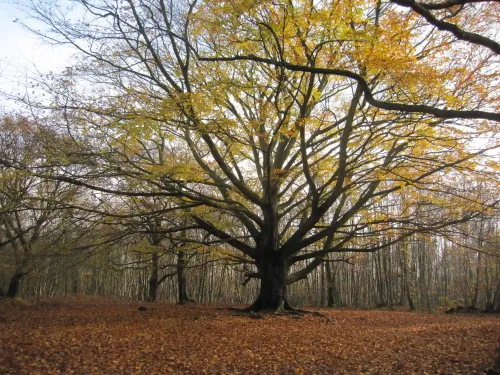Last week, I was working with Lesley, a landowner living near Shadoxhurst.
A little over a year ago, she and her husband bought a smallholding which hadn’t been managed for twenty years and was almost impenetrable. Luckily, she is a keen naturalist and discovered, to her delight, that species such as broad-leaved helleborine and glaucous sedge were present.
When she contacted me about the Ashford Meadows Project, I agreed that we could do some scrub clearance and grassland management as part of the project.
Noel (one of the Trust’s lovely West Kent Green Team volunteers, who had agreed to come and work with me), Lesley and I made a first attempt at scrub clearance and a hay cut in early September.
We spent the day in 28°C heat brushcutting around the anthills, stumbling over anthills, extricating the metal rakes from aforementioned anthills, all in between bouts of drinking gallons of water, searching for bottles of suntan lotion, cursing at the wretched bramble jungle and loading the fire.
When we were admiring our efforts at the end of the day, I remember being a bit discouraged and thinking that, had I been visiting the site to give advice, I would be suggesting that ‘what it really needs is a jolly good cut’! I forget how much effort it takes to get an area of neglected grassland back into management.





